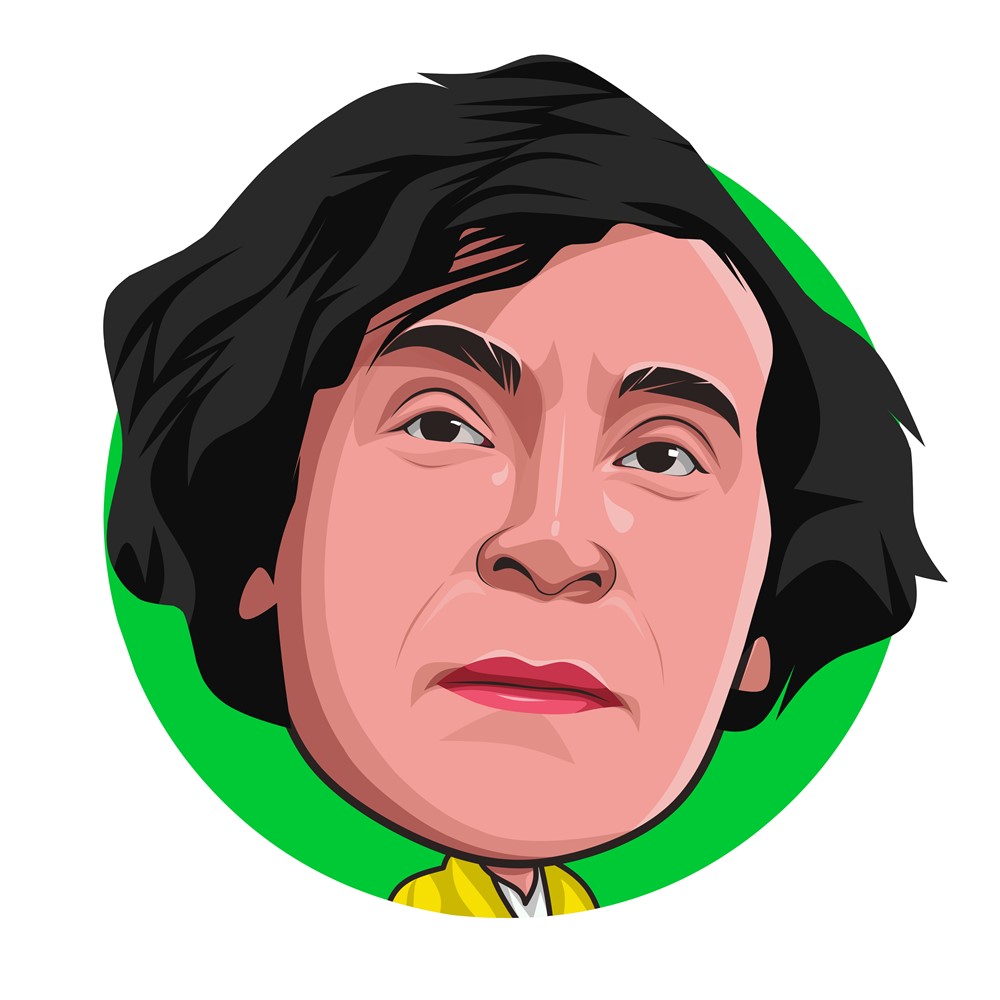
Among the most talented and influential of the 20th century, Marc Chagall was a multi-media artist whose works ranged from murals to stained glass windows. This article gives a glimpse into his early life, career and influences.

During the early life of Marc Chagall, he lived in Russia and France. He studied painting with a local Russian artist named Yehuda Pen. He also learned to play the violin. He became passionate about art, and resolved to pursue it as a career. Eventually, he moved to St. Petersburg. The city had a large Jewish community, and was a source of inspiration for him throughout his life.
After he completed his studies in painting, he started his career as a painter. He was introduced to a number of famous artists, including Nicolai Roevich and Leon Bakst. He worked with Fernand Leger, a French painter, and Pablo Picasso. He also studied Surrealism with Mstislav Doboujinsky. He also studied watercolor, drawing, and ceramics. He began his professional career in 1915, and he exhibited his works in Moscow.
The artist later moved to Paris. He was married to Bella, and they had a daughter, Ida. The couple had an extra child, David. During World War II, the family was forced to leave Paris, and they went to a villa in Marseille. They were helped by American journalist Varian Fry. In July 1915, Chagall married Bella, and they had a daughter. Ida died in 1994 at the age of 78.
In addition to his paintings, Chagall also made murals, ceramic plates, and large sculptures. He painted portraits of his friends and family. He had a vaudeville-style atmosphere to many of his paintings. He also illustrated the Fables of Jean de la Fontaine. He had a sense of humor and often used Yiddish jokes in his paintings.
Known as one of the most important painters of the 20th century, Marc Chagall’s career encompassed an extensive number of years. Although his works are largely dependent on the artist’s surrealist imagery, he also used vivid fields of color. His paintings remained consistent throughout his career. However, he also experimented with different media.
Chagall was a member of the Russian Jewish minority. He grew up in Vitebsk, Belarus. His family was low-income. This low-income background influenced his creativity. He became a professional painter in 1915. His early works were often about Vitebsk.
After Chagall’s relocation to Paris, he became a member of the avant-garde art community. He was a pioneer of Cubism, Fauvism, and Symbolism. He also experimented with a variety of extreme modernist forms. He produced a large number of works, including the “Old Testament” etching series. He later moved on to painting large ceramic murals. He also studied sculpture. He was a frequent collaborator with ballet companies. He was married to Bella and Ida. They had two children.
After leaving Moscow, Chagall stayed in France. He was part of the “golden age” of modernism in Paris in the 1920s. He became acquainted with Fernand Leger and Guillaume Apollinaire. He also worked with theatre companies. He was a prominent figure in the world of contemporary Jewish art.
Marc Chagall was a major modernist Jewish artist. His work is widely collected in Europe. He was the quintessential Jewish artist of the twentieth century.
Despite having Jewish heritage, Russian artist Marc Chagall produced paintings, mosaics, and stained glass windows that transcended the limitations of his ethnic background. His work is renowned worldwide. Among the most significant fine artists of the 20th century, he is a major figure in modern art and is a prominent contributor to European and world culture.
In 1911, Chagall migrated from his native city of Vitebsk, Belarus, to Paris. He studied at the prestigious Art School of Saint Petersburg for two years. There, he met Cubists and avant-garde poets. He developed friendships with Fernand Leger and Guillaume Apollinaire. He became an active member of the Grand Orient of the Peoples of Russia.
He exhibited his work in Munich in 1937, but the Nazis confiscated his work. Then, the Vichy collaborationist government of France helped send French Jews to concentration camps.
Eventually, Chagall was forced to flee Europe. He returned to Paris in 1948, but his career was thwarted by his inability to speak French. He eventually moved to New York, where he lived for a number of years.
During this period, he painted “Fiddler on the Roof” and created a series of tapestries for the Knesset state hall in Israel. He also dedicated a window to John D. Rockefeller in the Union Church of the Pocantico Hills.
In 1961, the Museum of Modern Art in New York held an exhibition of Chagall’s stained glass windows. He created twelve windows that represent the twelve tribes of Israel.
Among the many influences on Marc Chagall’s work was his Hasidic Jewish background. His family followed a strict Hasidic way of life. They were not allowed to leave the country of their birth. It was also considered illegal for Jewish people to go to Saint Petersburg, the capital of Russia. In addition, Jews were not allowed to enter the city without an internal passport.
Despite his Hasidic background, Marc Chagall studied at a prestigious art school in Saint Petersburg for two years. In this period, he developed a passion for surrealistic art. He was greatly influenced by Pablo Picasso and Henri Matisse.
During his stay in Paris, Chagall met an influential art dealer, Ambroise Vollard. In addition to commissioning him to produce etchings for the Bible, Vollard commissioned him to illustrate Jean de la Fontaine’s Fables. The book was published in 1956. In 1961, Chagall’s stained glass windows were exhibited in Paris and New York. In his honor, the UN’s second secretary general, Dag Hammarskjold, received a Peace window. The window was 12 feet high and contained symbols of love and peace.
The Russian government’s policy of denying Jewish rights to enter the country during World War I did not prevent Chagall from producing his most creative works. He painted scenes from his childhood during the war. Some of his paintings from this period include Wounded Soldier (1914), Marching (1915), and Birthday (1915).
After the war, Chagall moved with his family to Moscow. He also designed the sets for the ballet Aleko, which adapted Alexander Pushkin’s verse narrative The Gypsies. It was set to music by Pyotr Ilyich Tchaikovsky.
During his time in the United States, Marc Chagall crafted stained glass windows for churches and hospitals. He hoped that the windows would help people connect to the spiritual world.
Chagall’s style is a combination of many different art movements. He drew inspiration from his upbringing in the USSR, his travels to Western Europe and the Jewish community. He produced thousands of artworks.
His first major stained glass project was created in 1956. He completed three pieces for the Metz cathedral. He also designed a series of stained glass windows for the Art Institute of Chicago. He later dedicated a window to John D. Rockefeller.
He was also involved in a stained glass production for the Hebrew University’s Hadassah Medical Center in Jerusalem. It was permanently installed in February 1962. In 1961, his work was exhibited in the Museum of Modern Art in New York. It was a tribute to America’s Bicentennial.
In honor of Dag Hammarskjold, the second secretary general of the UN, Chagall created the “Peace Window.” The window is 15 feet wide and 12 feet tall. It contains symbols of peace and love.
In 1957, Chagall moved to Israel. He then created a series of stained glass windows for the Fraumunster church. The church has five large windows, including one that is 32 feet tall and three feet wide. The other four windows are small rose windows. The windows have Hebrew texts.
Among the most influential twentieth-century painters is Marc Chagall. He is often associated with surreal art. However, the paintings that he produced remain consistent throughout his career. The artist’s unique worldview is rooted in his Jewish heritage. He also employed unusual pictorial paradoxes to bring his images to life.
Although he had a complicated relationship with Judaism, Chagall’s Jewish heritage remained a significant influence on his work. He saw his creative abilities as a result of his upbringing in Belarus. He also drew inspiration from his Hasidic roots.
During his time in Russia, Marc Chagall studied at the Zvantseva School of Drawing and Painting in Saint Petersburg. He became acquainted with Leon Bakst, a theater designer. He also studied with Fernand Leger and Pablo Picasso. Eventually, Chagall moved to Paris. He began studying Cubism.
He then moved on to ceramics and stage set design. He painted murals and ceramic plates. He toured France and neighboring countries. He also developed a commercial partnership with Ambroise Vollard. In 1939, Chagall won the third prize at Carnegie Place in New York. Afterwards, he traveled to the Cote d’Azur. He became famous. He also had a successful career as a sculptor.
Marc Chagall also exhibited his works in Berlin, Paris, St. Petersburg, and Moscow. He was considered a kindred soul to the Surrealists. His paintings were full of vivid colors. He did not want his works to be tied to a particular style. He wanted them to have a universal significance.
Max Ernst Among the most famous artists of the twentieth century, Max Ernst was a
Angelina Jolie DCMG – An Icon in Hollywood Whether you love her as an actress
Barack Hussein Obama II Barack Hussein Obama II served as the 44th President of the
A Brief Look at Ben Affleck Benjamin Affleck is a well-known American actor and director.
Alicia Keys Alicia Keys is a famous American singer, songwriter and pianist. She was born